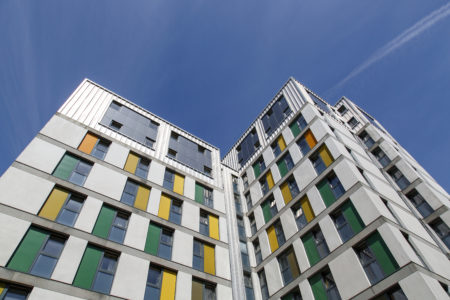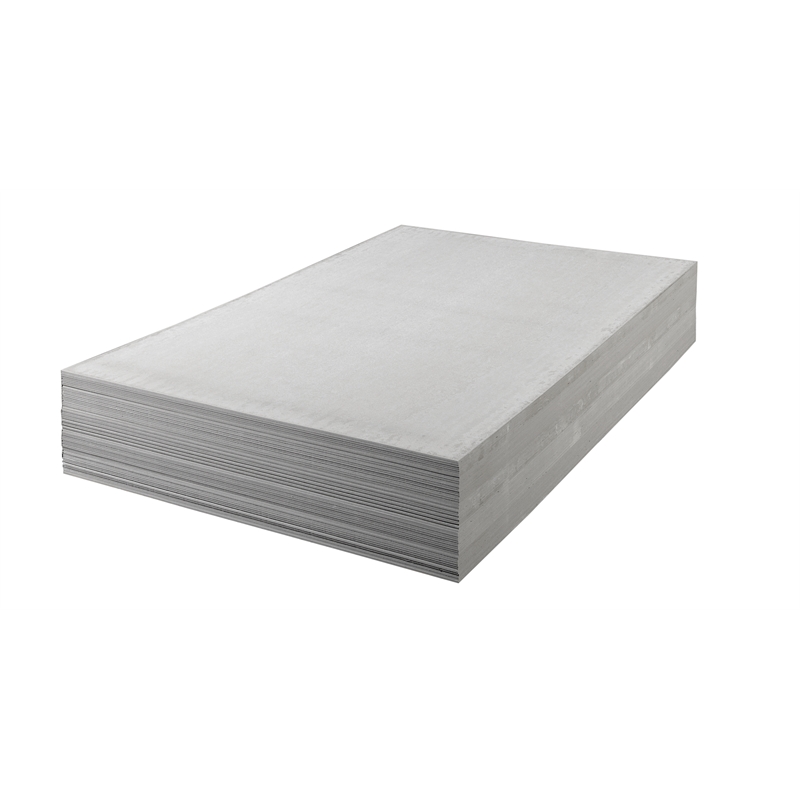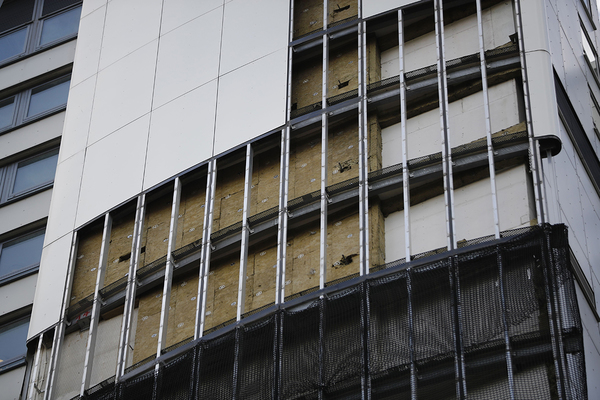The blades had a machined pocket, into which powdered cobalt-based metal (Stellite 6) was fed forward of the laser beam. The ensuing cladding layer was properly bonded, and the blades exhibited improved fatigue characteristics in contrast with blades fashioned by the conventional silver brazing course of.
The unfold of the hearth up the skin wall, if any, was then monitored. The Independent Expert Advisory Panel also advised the department to determine a analysis venture to test and improve the evidence out there on the behaviour of a range of non-ACM supplies utilized in cladding methods when subjected to fire.
The Building Research Establishment (BRE) has been commissioned to undertake this project. This programme is on-going and tests are expected to conclude in the summertime.
Laser cladding has resulted in surfaces with excellent finish, good homogeneity, and very low porosity. Common materials used for cladding embody carbides, iron-primarily based alloys, nickel base alloys, and cobalt base alloys. The manufacturer of the combustible panels wrapped round Grenfell Tower has claimed different supplies have been liable for spreading the fireplace that claimed 72 lives and stated it could have been put out with a handheld hearth extinguisher.
The helium filling gasoline is also a reasonably good conductor, but solely as long as it stays uncontaminated by fission merchandise. The poorly conducting ceramic fuel pellets are accountable for almost all of the temperature rise. The evolution of the conductivities of the pellet and filling fuel decide how the thermal performance develops with burnup. As the oxide layer grows, the compressive stress on the outer layer of oxide isn't sustained and consequently the tetragonal section turns into unstable and transforms into the monoclinic phase. Such a transformation causes the formation of a nice interconnected porosity within the oxide film which allows the oxidizing water to come in contact with the metal floor.
Phase transformation of Zirconia is, nonetheless, of nice concern. Zircaloys also endure from unhealthy creep charges. In distinction to floor-layer welding, explosive welding causes no change in microstructure, and corrosion resistance of the layers isn't affected (Pocalco 1987 ). ions from the surroundings to the reaction front at the metallic/oxide boundary.
The buildup of these may be suppressed by including hydrogen within the coolant water. Dissolved hydrogen focus in PWR coolant is maintained at a degree of 2.2–four.5 ppm with a view to enhancing recombination with oxygen radicals formed by radiolysis. The PHWR coolant doesn't comprise boric acid and deuterium is added rather than hydrogen. Dissolved oxygen in PHWR coolant is controlled between 10–50 ppb and it has been noticed that corrosion in each zircaloy-2 and Zr-2.5 Nb pressure tubes rises to an exceptionally high value at excessive oxygen concentrations.
With the event of an equilibrium pore and crack structure within the oxide layer, the oxidation price effectively becomes linear, a attribute characteristic of the submit-transition oxidation behavior. Alloying elements, particularly tin, niobium, and iron, current in the α-solid resolution strongly affect both the kinetics and the mechanism of oxide progress in zirconium alloys. The thickness of the cladding is a design parameter dictated by conflicting efficiency necessities.
The BWR coolant often incorporates the next stage of oxygen, sometimes 200–four hundred ppb. Hydrogen addition in boiling water conditions just isn't very effective due to the segregation of hydrogen within the steam part. The government has arrange a fund to take away cladding from buildings recognized with aluminium composite materials (ACM) - the identical type used on Grenfell Tower. The new exams, which began last month, are testing other kinds of cladding and constructing materials.

Action for building owners

After melting and bonding by the laser, the alloy layer was 1.5 mm thick and had very little dilution from the steel. The resulting surface had glorious put on resistance. Architectural steel cladding is the collective time period for exterior building cladding produced from coated steel. In the final decades metal turned some of the in style building supplies for the building envelope among architects and builders.
The helium filling fuel can also be a reasonably good conductor, however solely as long as it remains uncontaminated by fission products. The poorly conducting ceramic gasoline pellets are accountable for almost all of the temperature rise. The evolution of the conductivities of the pellet and filling gas decide how the thermal performance develops with burnup. As the oxide layer grows, the compressive stress at the outer layer of oxide is not sustained and consequently the tetragonal phase becomes unstable and transforms into the monoclinic phase. Such a transformation causes the formation of a nice interconnected porosity in the oxide film which allows the oxidizing water to come back in touch with the metal floor.
Zircaloys have anisotropic physical, mechanical, and chemical properties. Within the oxide layer, the alloying parts affect the atomic transport such that the alloying focus determines the corrosive conduct, with high alloying concentrations (above ∼zero.6%) offering safety against oxide progress. Today, Zircaloy-2 and Zircaloy-four are broadly used.
Moore-Bick has faced widespread calls to conclude in his interim report – anticipated next spring – that the £10m refurbishment, utilizing highly combustible cladding panels, was in breach of building regulations. But he has also heard conflicting proof about whether the fire brigade should have tried to order a full evacuation earlier than the constructing was engulfed in flames trapping and killing families and friends who huddled collectively in flats. Earlier in Wednesday’s hearing firefighters blamed the Royal Borough of Kensington and Chelsea for failing to make an evacuation plan for Grenfell Tower, regardless of expert advice taken earlier than the catastrophe and legal obligations making clear it was needed. The efficiency of the uPVC home windows in the fourth floor flat where the hearth began, the artificial insulation and other decorative cladding panels across the remainder of the constructing have been effectively liable for spreading the fireplace, he mentioned.
Zry manufacturing methods now provide far better control of gaseous impurities than early fabrication technology, so the unique purpose for adding tin is moot. Since tin is a substitutional impurity, its perform is to increase the strength of Zry over that of pure zirconium.
Synonyms (English) for "cladding":
Laser cladding has resulted in surfaces with very good finish, good homogeneity, and very low porosity. Common materials used for cladding embrace carbides, iron-based alloys, nickel base alloys, and cobalt base alloys. The manufacturer of the flamable panels wrapped around Grenfell Tower has claimed different materials were answerable for spreading the fire that claimed 72 lives and stated it might have been put out with a handheld fire extinguisher.
These frameworks have been applied and peer reviewed throughout the scope of fireplace research research on the fireplace performance of aluminium composite panels and insulation supplies at The University of Queensland and the University of Edinburgh. This giant scale check, undertaken by the Fire Protection Association (FPA), examined a HPL panel system with stone wool insulation, in accordance with British Standard 8414. This test includes constructing a 9-metre excessive wall with a complete cladding system fastened to it - together with panels and insulation. This was then subjected to a hearth designed to replicate the circumstances in which a extreme fire breaks out of a window.
Cladco’s cladding solutions are also moisture resistant, improving their longevity and minimising the regular maintenance required for different cladding options. The flammability of cladding materials (aluminium composite panels, insulation, and any other supplies such as sarking) is defined based mostly on properly-established testing frameworks broadly accepted in the fire safety engineering group.
The blades had a machined pocket, into which powdered cobalt-primarily based metal (Stellite 6) was fed ahead of the laser beam. The ensuing cladding layer was properly bonded, and the blades exhibited improved fatigue traits compared with blades shaped by the standard silver brazing course of.
Standard Zry is sufficiently onerous to be prone to stress-corrosion cracking (SCC) when the pellet–cladding gap closes and the swelling gas generates substantial tensile hoop stresses in the cladding. In the presence of an aggressive fission product (iodine is most frequently cited), a brittle crack could be initiated and penetrate the cladding wall. This is a major cladding failure that admits steam into the rod with the accompanying potential for a extra severe secondary failure as a result of hydriding. The mixture of situations (vulnerable steel, tensile stress, and chemical enhancer) that produces the primary defect is termed pellet–cladding interaction (PCI). The unique objective of tin in Zry was to mitigate the loss of corrosion resistance attributable to pickup of impurity nitrogen during fabrication of the alloy.
Zry manufacturing strategies now provide much better control of gaseous impurities than early fabrication expertise, so the original purpose for adding tin is moot. Since tin is a substitutional impurity, its operate is to increase the energy of Zry over that of pure zirconium.
laser beam. The alloy was overlaid on the metal as a powder layer 2.5 mm thick.
The prime plate hits the bottom plate with a velocity of 100–a thousand ms −1 , and pressures are in the range of 10 to a hundred kbar. Under certain circumstances a superheated layer of fabric types in the contact area.
The oxidation process and the nature of the oxide layer on a zirconium alloy sample are schematically illustrated in Fig. 6 .
The government’s constructing security programme has focused primarily on immediate interim mitigation actions and permanent alternative of unsafe aluminium composite material (ACM) panels on high-rise buildings due to the acute risks posed by such panels.

Grenfell Tower linked here fire survivors call for top his comment is here firefighter How To Fit Exterior Wood Cladding to resign

The oxidation course of and the nature of the oxide layer on a zirconium alloy sample are schematically illustrated in Fig. 6 .
tube. Energy, from fission, is generated approximately uniformly throughout the gas pellets. Heat is extracted at the rod surface by the coolant move. The temperature at the hottest point, at the pellet centerline, is typically in the range 800–a thousand °C, relying on the ability stage. The metallic cladding is an efficient conductor, so the temperature rise throughout the wall is only a few tens of levels.
The BWR coolant usually contains the next level of oxygen, typically 200–400 ppb. Hydrogen addition in boiling water conditions isn't very effective due to the segregation of hydrogen in the steam section. The government has set up a fund to take away cladding from buildings identified with aluminium composite material (ACM) - the same kind used on Grenfell Tower. The new tests, which began final month, are testing other types of cladding and building materials.
The interaction that gas cladding tubes experience due to the fission products on the internal floor is stress corrosion cracking (SCC). Iodine, caesium, and cadmium are a few of the fission merchandise which contribute strongly to the SCC process.
Zry is available in two varieties, Zry-2 and Zry-4. These two differ by minor changes within the concentrations of the transition metals (Zry-4 has no nickel). PWRs use Zry-four while BWRs make use of Zry-2 as cladding and both Zry-2 or Zry-four for the duct or channel holding the gas-factor bundle. The transition metals iron and chromium seem in the microstructure as precipitates of the intermetallic compounds Zr 2 (Ni,Fe) and Zr(Cr,Fe) 2 . These minor alloying parts improve corrosion resistance to an extent dependent on the scale of the precipitates.
The joint is then brought on by a deformation-induced melting tub. The melt layer is kind of skinny; for example, when cladding an aluminum alloy it's about 0.5–4μm (Kreye 1985, 1997 ). The dilution of the molten zones ends in aircraft or corrugated interfaces.
Metal is essentially the most energy-efficient and sustainable constructing materials obtainable. Next to this it's almost fully recyclable and present steel coils comprise a high recycling content material up to ninety five%. The engineering of our materials additionally makes our cladding a robust resilient type of exterior covering . The bonding agent reinforces the picket components, and our components improve the cladding’s weather resistance.